This week, 15 countries in Asia and the Pacific joined the Regional Comprehensive Economic Partnership (RCEP), which is arguably the largest free trade agreement in history. To explain the origins of the agreement and how it will affect economic integration across Asia, David Dollar is joined by Peter Petri, a nonresident senior fellow at Brookings and professor of International Finance at the Brandeis International Business School.
Related content:
RCEP: A new trade agreement that will shape global economics and politics
The future of global supply chains: What are the implications for international trade?
DOLLAR: Hi, I’m David Dollar, host of the Brookings trade podcast, Dollar & Sense. This week, 15 Asia-Pacific nations signed the Regional Comprehensive Economic Partnership, arguably the largest trade agreement in history. So, we’ve added a special edition of our podcast to talk about this development. I have with me Peter Petri, a leading trade economist at the Brandeis Business School and also a nonresident senior fellow in our China Center at Brookings. So welcome to the show, Peter.
PETRI: Thank you, David.
DOLLAR: So, RCEP was originally an ASEAN initiative. ASEAN is the Association of Southeast Asian Nations with 10 members. Peter, tell us a little bit of the history of how this agreement came about and who else is involved beyond the ASEAN group?
PETRI: David, yes, the context is interesting and important. For a long time, probably going back at least 20 years, it has been recognized that East Asia has a lot of important economic relations within it and some kind of trade agreement that offered a framework for these relationships would have to happen sooner or later. But China and Japan, long uncomfortable with each other politically, and the rest of the region uncomfortable with either of them taking the lead, were not the right candidates for leading this initiative. So, the outcome was that ASEAN, this group of 10 countries that make up Southeast Asian nations, brokered a deal. They included not just themselves and China and Japan and Korea in the agreement, but also three other countries, Australia, New Zealand, and India, to be part of it, kind of leavening the potential conflict between China and Japan. So, that was the beginning, and ASEAN also took the lead in negotiating the agreement. That worked out very well. It was slow. It was very consensual. But, in the end, we did get the agreement that that countries expected.
Looking back on ASEAN, ASEAN was formed in 1961, mainly among three Southeast Asian countries and mainly to fight communism, which was then, as you recall, very much an issue for the region. Vietnam, Cambodia, and so on. Since then, the organization has changed dramatically. It has 10 countries now. Its main focus is economics. There’s a big free trade agreement within the 10 ASEAN countries, and they also have had trade agreements with each of these critical partners: China, Japan, Korea, and three others, and India. This group, ASEAN plus its six dialog partners, were the initial negotiators in RCEP. India dropped out very close to the end, but the other 15 concluded the agreement.
What is important about this is that ASEAN is a kind of slow-moving but very, very deliberate organization. It has been very successful. It has deepened its own economic understandings. It has built stronger agreements. So, this is just the beginning – this agreement among the 15 is really just the beginning of a process that is likely to see better trade agreements and increasingly closer relations among these 15 countries.
DOLLAR: So not too long ago, we had another partnership start up in the Asia-Pacific region originally called the Trans-Pacific Partnership and then after the U.S. dropped out renamed the Comprehensive—
PETRI: The Comprehensive and Progressive Trans-Pacific Partnership.
DOLLAR: Thank you.
PETRI: The Comprehensive and Progressive Agreement for Trans-Pacific Partnership. It’s a very, very long title. Very few people actually are able to get it out all at once.
DOLLAR: Right, and obviously, I was not one of the people who could get it out all at once. But my question for you, Peter, is how did this new RCEP partnership, how does that differ from the Trans-Pacific Partnership? Many of the same countries are involved, so what’s the difference?
PETRI: The CPTPP has 11 members after the United States left, and 7 of those are also members of RCEP. The two agreements are very different because unlike this kind of gradual, improving, strengthening model that I’ve described in the case of ASEAN, the CPTPP is a kind of rigorous, Western-style agreement. It’s very specific, very detailed, and it’s very, very hard to negotiate. So, it is what it is. It will stay that way except under very serious, difficult negotiations. The CPTPP is an agreement among very outward-looking, stronger, more advanced economies than RCEP is. RCEP is very diverse. I mean, you have huge countries like China and very small ones like Brunei—Brunei is only about a few hundred thousand people. Very rich countries like Japan, very poor ones like Laos. So, it has to span a wide range of countries, and its provisions accommodate these huge differences. The CPTPP didn’t have to do quite as much, although it itself was very difficult to negotiate. Maybe it is best to begin by what the really big elements of RCEP are and then compare some of them to the big headlines of the CPTPP.
So, what is important about RCEP? First of all, it is the first major agreement that connects China, Japan, and Korea in a single free trade grouping. This is for the same political reasons that we talked about a few seconds ago. It is indeed very difficult to think of how this agreement among these three could have been done except for the ASEAN leadership of this larger bloc. So now that that’s in place, in fact, both Japan and China have indicated that they are moving ahead with a China-Japan-Korea free trade agreement. That will probably take time to negotiate as well, but it is kind of beginning to unleash other relationships that would have been very difficult to do politically without this framework. So that’s one accomplishment.
Another is that tariffs will be lowered. Now, the tariffs will not be lowered as much as in the CPTPP. It will be probably around 90 percent on average. I am told, I have not seen the agreement, but I am told that there are something like 5,000 pages worth of tariff lines alone to analyze. It will take time for us to see exactly what those are. But fewer and slower tariff reductions will be made in this larger group than in the CPTPP group. So that’s a second point.
The third point— and this is probably the most interesting feature of the agreement— is its rules of origin section. Now, rules of origin, your listeners may not be familiar with this kind of nitty-gritty technology of trade agreements, but rules of origin specify what, for example, Malaysia has to do in order to be able to use the tariff preferences of the agreement to sell products to Japan. In other words, how do you produce a product in Malaysia to make sure that the agreement’s tariff preferences can be used to sell it in Japan? And the answer is you can’t use too much products from, say, the United States that comes in from far away, because then really it ought to be the U.S. tariff that applies rather than the intra-regional RCEP tariff. So, that’s rules of origin; it tells you what you have to do in order to get that preference.
In the case of RCEP, the terms are probably the most lenient I’ve ever seen in a major trade agreement. That means that basically you have to have at least 40 percent of the product produced not just in Malaysia, but anywhere in the RCEP region. So, 60 percent could still come from the United States, but 40 percent, at least, should be produced in Malaysia or China or Japan or any one of the 15 countries. That’s a very low threshold. And that’s not even the final point on it because it turns out that companies can use other ways of calculating origin in order to satisfy the origin rule.
The third point is that there is a single certificate of origin that all countries will be able to use to sell to anybody in the region. So, for a firm that does business in this region, it is very easy to do it, it is very easy to produce it, and all of this is due to the terms of the rules of origin chapter in the agreement. So, we may come back to that later because that means supply chains that operate within the region have a very strong incentive.
There are other chapters also. One interesting feature of the agreement is that it will have a secretariat so that there will be a group of people meeting regularly in order to encourage further improvements in the agreement.
If you compare all of this to CPTPP, that has much stronger rules on intellectual property, on investment, and it has a very detailed e-commerce section. All of these are in RCEP but are much weaker and less rigorous. And finally, RCEP has no rules at all on labor, environment, state-owned enterprises – issues that were very important to the U.S. and were included in the CPTPP.
DOLLAR: Thank you, Peter. I want to follow up on this value chain issue because most global value chains are deeply embedded in Asia, with China at the heart. The Trump administration has talked about getting value chains to move out of China, perhaps to reshore to the United States. So, can you say a little bit more about how the RCEP agreement affects value chains and this objective of the current U.S. administration?
PETRI: Let me essentially repeat the argument that I was making before, which is that RCEP will very strongly encourage value chains to develop within the region. That is connecting, for example, an automobile made in Japan with parts from Korea, electronics from China, engine or breaks from Thailand. So, it will encourage production from the places where the strongest and most efficiently made products can be bought. That means that the product as a whole will be cheaper. So that will make RCEP, in fact, a very efficient competitor with China— obviously important within its value chains. And then the question is, will the United States be ready to buy those products, or will it say, you know, those are Chinese components that you’re using; therefore, they ought to have to meet a higher tariff? We don’t know about that. But RCEP will be a stronger competitor.
David, you have done a lot of work on value chains and particularly China’s role in it. How do you think we should think about RCEP in the larger world given these new policy developments?
DOLLAR: Well, you have just put an interesting thought into my head because I’ve been arguing that China has moved into the middle of a lot of value chains already. It started out doing the labor-intensive assembly, which tends to come at the end. But now, China produces more technologically sophisticated components and machinery. So, as a result of this U.S. trade war, we have definitely seen some final assembly shift to some of the Southeast Asian countries we are talking about like Vietnam and Indonesia. I would have thought RCEP would accelerate that trend in a way, and may not be the main driver but one implication is that it does an end run around the U.S. tariffs aimed at China. Now, you just put the thought into my head, the U.S. could try to change that. But my sense is that is going to be administratively very, very complicated. Plus, a lot of these countries in RCEP are allies of the United States. Are we going to stop products coming in from Korea because they’ve got a certain amount of Chinese content? I just think administratively it would be a nightmare. It suggests to me just one more reason why this U.S. trade war aimed at China is not working out and is not likely to work out and should be rethought.
PETRI: I think you’re right, and it will be interesting to follow up on this. One other thought is that India, which left the negotiations very, very late— it actually left them last November just on the eve of their conclusion— so India was involved in negotiations all the way but in the end left them. India will be very seriously harmed, I think, by that decision because these East Asian value chains, especially with China as a core member of them, are going to be very powerful, especially in world manufacturing. Those are areas where India ideally would have had a larger role.
DOLLAR: Well, it is definitely hard to keep geopolitics out of these discussions. You and I are economists, but I want to ask, is there a relationship between this RCEP agreement and China’s Belt and Road Initiative, which is its big diplomatic initiative building infrastructure all over the developing world? The ASEAN countries, many of them are participating very actively, so is there a relationship?
PETRI: Yes. There is a large overlap indeed. As you mentioned, of the 1.4 trillion which people have mentioned as a possible ultimate value of BRI investments, about half have already been committed to ASEAN countries. There is now a list of about $700 billion worth of projects that could be potentially built— not all are yet underway, but could be potentially built in the ASEAN countries. BRI, the Belt and Road Initiative, is fundamentally about connectivity, rail, ports, logistics, energy— a corridor that essentially connects in East Asia countries all the way down from China to Singapore and beyond.
It was interesting, I was visiting Nanjing University in China. They have a beautiful new ASEAN study center where ASEAN students come and where professors specialize in research on ASEAN. They were telling us that they would be the northern head of this railway which goes all the way down to Singapore. So, this was a BRI project in the making. There is a very natural synergy between regional economic integration through trade agreements like those we have been discussing, RCEP and CPTPP, and connectivity. And then if you add to that investments financed in part through the BRI, you have a very powerful network of better rules for trade, better connections among trading countries, and greater investments in each of those countries to make this larger regional network possible.
David, I’m going to bounce this back to you because you also know a lot about BRI and the AIIB, the Chinese investment bank. Does it sound like this is a kind of entity that will enjoy a lot of these synergies in the future?
DOLLAR: Well, I definitely agree with your basic point, Peter. I worked for the World Bank for a long time. In fact, you and I met, if I remember correctly, on a World Bank study on Vietnam starting in 1989. Looking at developing countries integrating with the world economy, which I still think is a very good strategy, I often thought of infrastructure as the hardware of connectivity and then trade agreements, trade facilitation, all of that is the software of connectivity. And oftentimes, the software is more important. Developing countries would like someone to come in and finance their infrastructure, but if they have high tariffs or inefficient customs or corruption rampant in the system, then frankly the infrastructure is not going to have a very high rate of return. So, I think it is…the combination of BRI and RCEP is pretty powerful as far as spurring growth and progress in Southeast Asia.
Peter, you kind of naturally put the question into my mind: there’s some debate in the U.S., or at least talk, about whether China is going to be writing the rules of 21st century trade or is the United States going to be writing the rules of 21st century trade. You emphasize some important differences between RCEP on the one hand and TPP in which the U.S. had a leading role until it dropped out before implementation. So, is this an example of China writing the rules for the 21st century?
PETRI: It is Asia writing some rules, and China is obviously a very important part of Asia, so China has had a hand in it. But I think the process I tried to describe is really not just China. There is a much broader regional agreement on some of these directions. And I suspect the point is that the rules for the 21st century will not be written either by the United States or by China or by Asia, but they will have to somehow triangulate the differences among these two types of economies and visions of the future trading system. I don’t think we fully appreciate this yet. These rules will have to be, if they are to bridge both Asia and the United States, they will have to be different from the ones that we have so far developed.
So in some areas I think we’ll be able to see agreement between these two groups and you will probably have relatively easy ways to negotiate. For example, on tariffs: we want them low. On investments: we want them protected and to generally have access to the same kind of markets as domestic companies might. Intellectual property: I think even in China there is increased appreciation for the importance of intellectual property. But on other areas, I think we are going to have to do a lot of thinking. The one that comes to mind most quickly is state-owned enterprises. All Asian economies have important state-owned enterprises. This is true, obviously, for Vietnam and China, but it is also true for Singapore, for Japan, for essentially both Western-style and other large regional economies.
Even in the United States, on issues like industrial policy, we will have strong “Buy America” programs. We will have subsidies possibly for national champions and for companies and technologies that we think are especially important. We worry a lot about national security, and we want to protect sectors of the economy that have technologies that we value. We worry a lot about data. These are not just kind of international trade points; these are also points very much in the national dialog. So, on all of these areas, I think we will need to rethink what the policies are. Those new ideas may well begin to bridge the gap which we now see between Western and Asian trade agreements.
DOLLAR: I think that’s really an excellent insight, Peter. The world consists of more than just the U.S. and China. There are other big, important economies involved. They have agency. They have views. So, you have just changed my thinking about this a little bit. What you are seeing is China has had to adapt to a pretty large number of countries that are part of this agreement and probably in the same way the U.S. would have to adapt if it wants to be part of large agreements. It’s not China and it’s not the U.S. that’s going to set the rules. It’s going to end up being negotiated.
So last question, Peter: What should the Biden administration be doing, and not just about RCEP, but more generally about trade in the Asia-Pacific region? We now have these two big agreements and in both cases the U.S. is absent. So, what should the United States be doing under the Biden administration?
PETRI: David, that is a good point and very much in line with the last point we were discussing. The United States has fallen pretty far out of the mainstream, not just in Asia, not just on trade, but on the World Trade Organization, with its conflicts with various countries around the world, various regions like Europe. So, I think that the really big, important first thing that the Biden administration has to do is to rethink all of this. To try to kind of conceptualize what America’s interests are in trade and looking ahead to relationships with different parts of the world.
We have not had a clear Asian strategy over the Trump years. There is the Free and Open Indo-Pacific vision, which the Trump administration rolled out. And scholars who have looked at it kind of like the words because they look like a free and open region, peaceful region across the Indo-Pacific. They are very much consistent historically with U.S. policies in the past, but the implementation has been very narrow gauged— kind of one-sided. Essentially, envisioning China as an existential threat and then using all kinds of policies to try to contain what the planners saw as this threat. In the process, they more or less ignored the economic pillar. So very little in the way of new agreements or new financial support or new engagements were initiated during the last four years.
Meanwhile, Southeast Asia is becoming more and more closely tied to China in its trade relations. So, countries have been complaining that they have had to choose between lining up with the United States under its preferred security umbrella—they very much welcome U.S. presence in the region—on the one hand and the close economic ties that they are developing with China on the other hand. So, repairing all of this is not going to be easy. There is a huge deficit of trust. The deficit of trust frankly goes in all directions. We don’t trust China much, nor do many Southeast Asian countries trust China, particularly given its political moves in the South China Sea. And China doesn’t trust us much, and indeed China is not alone because of the way that we have backed away from very longstanding commitments on international trade and leadership of international trade.
So I think all of this requires, on the part of the Biden administration, a lot of thinking, and a very clear policy, building alliances, and generally approaching very carefully how to repair the damage of the last four years. In fact, they will have a lot of time to think because as we know the domestic problems that the Biden administration faces are immense, so that there is a lot of work to be done. Unfortunately, this part of repairing global partnerships is just one important part of those.
DOLLAR: I’m David Dollar, and you’ve been listening to the Dollar & Sense podcast, I’ve been very fortunate to have my friend Peter Petri here to explain to us this new Regional Comprehensive Economic Partnership involving 15 Asia-Pacific nations, what it means for the Asian economies, and what are some of the implications for the U.S. So, thank you very much for joining us, Peter.
PETRI: Thank you, David.
The Brookings Institution is committed to quality, independence, and impact.
We are supported by a diverse array of funders. In line with our values and policies, each Brookings publication represents the sole views of its author(s).

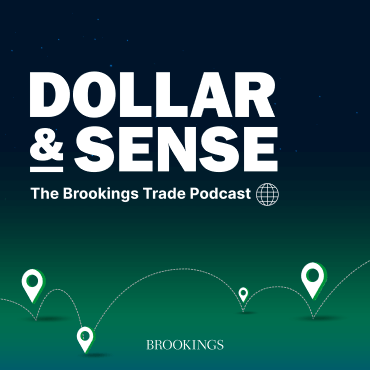
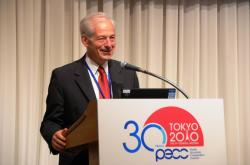

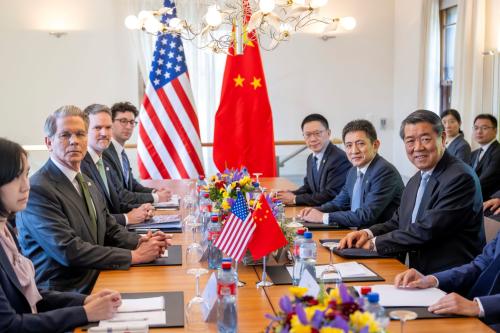
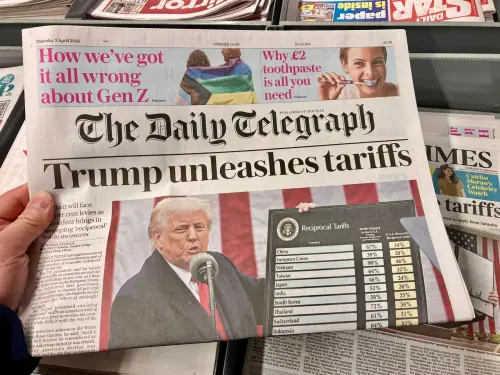
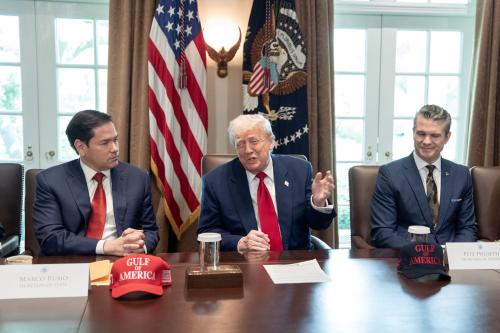
Commentary
PodcastWhat you should know about RCEP, Asia’s new trade agreement
November 19, 2020
Listen on
Dollar and Sense Podcast